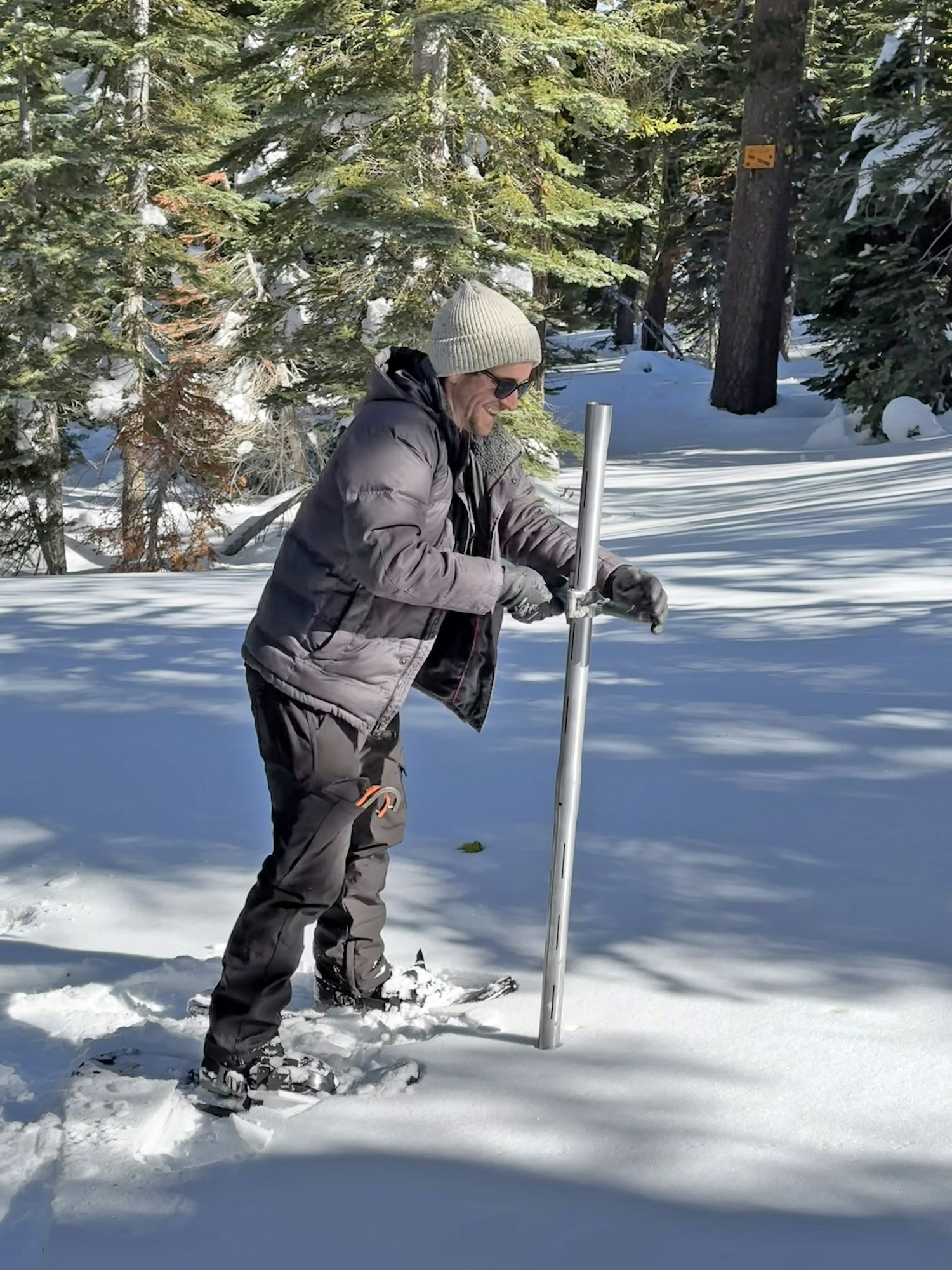NID March snow survey: snowpack at 80% before winter storm

(March 5, 2024) Just ahead of last weekend’s blizzard, Nevada Irrigation District (NID) hydrographers measured 80 percent of average snow during a monthly survey. Of course, that changed with the recent storm activity as March roared in like a lion.
“The March survey totals do not include the most recent storm which brought 8-10 inches of precipitation to our watershed and an additional 5-7 feet of snow,” said NID’s Water Resources Superintendent Thor Larsen.
During the measurements for March, NID hydrographers found the average water content in the snowpack was 22.5 inches, which was 80 percent of the 28.2-inch average.
Overall during February, precipitation was 14.48 inches, which was 137 percent of average. At Bowman Lake, precipitation tallied at 45.28 inches, which was 93 percent of average, on March 1.
“Increased precipitation and colder temperatures in February significantly increased the snowpack from the prior month,” Larsen said.
As a result, as of Feb. 28, NID’s reservoirs were storing 216,592 acre-feet of water, which was 80 percent of capacity and 104 percent of average.
“Reservoir storage levels remain high and March forecasts are projecting higher probabilities for above average precipitation,” Larsen said.
Here are the specifics of the March snow survey:
- NID’s highest course, Webber Peak, at 7,800 feet, had 73.9 inches of snow with a water content of 25.1 inches (survey taken on Feb. 28)
- English Mountain snow course (7,100 ft.) had 82.9 inches of snow with a water content of 31.3 inches (survey taken on Feb. 27)
- Webber Lake (7,000 ft.) had 62.6 inches of snow with a water content of 21.3 inches (survey taken on Feb. 27)
- Findley Peak (6,500 ft.) had a snowpack of 58.6 inches and a 21-inch water content (survey taken on Feb. 27)
- Bowman Reservoir (5,650 ft.) had 33.9 inches of snow and a 13.6-inch water content (survey taken on Feb. 27)
- At the lower Chalk Bluff snow course (4,850 ft.) on the Deer Creek watershed, there was no snow, as of Feb. 26 (the Chalk Bluff numbers are not included in the total average).
A member of the California Cooperative Snow Survey, NID conducts three official snow surveys each year in February, March and April. Results of the snow surveys are used to predict water availability locally and statewide.


